Malcolm Barns is one of the unsung heroes of Australian Dressage. A rider whose huge natural talent carried him to a win in Australia’s first ever Three Day Event over 50 years ago, and then saw him star in the show ring, and emerge as one of our first serious dressage competitors. Malcolm also possessed the insight that to really learn his art he needed to travel, and to travel to the home of dressage – Germany.
He brought back ‘crazy’ ideas with him. At a time when horses were jacked up and double bridled into a very artificial outline, or falling onto their forehands, it was Malcolm who taught that they must stretch and relax and find their rhythm and balance. A tall thin man, Malcolm has the soul of a dancer or a musician, for him, like all classically trained riders, rhythm is one of those essential prerequisites to riding well.
Read Malcolm’s easy to understand words on the half halt, and what it achieves.
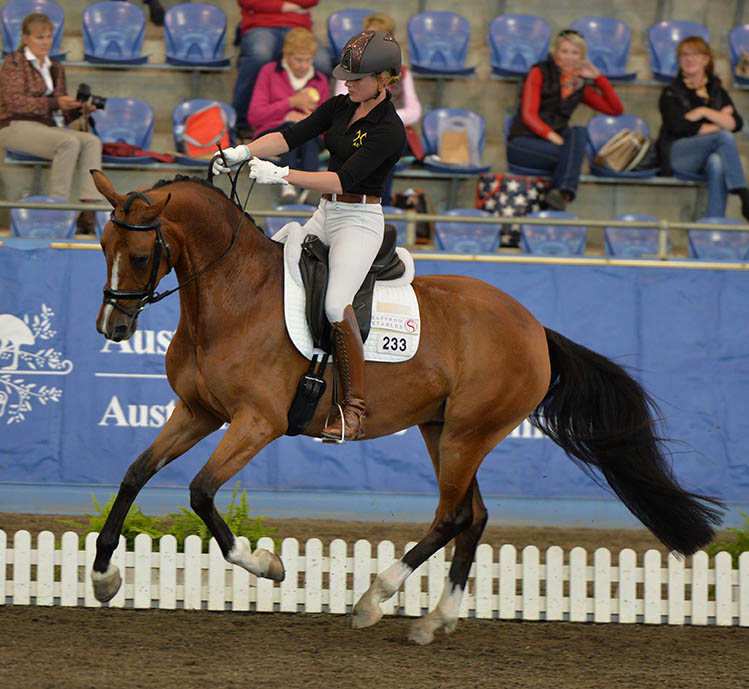
Anna Fiebelkorn demonstrates überstreichen
The half halt is the simultaneous application of the seat and leg against the hand followed by a lightening. Not to be confused with ‘testing’ (German – ‘uberstreichen” – reaching forward with the hands to release the contact, to check self carriage of both rider and horse).
The term ‘half halt’ is a very misleading translation from the French ‘Parade’ as it has relatively little to do with halting as there are stretching as well as compressing applications. However, we must learn to accept it or better still, scrap it and return to the French and interpret it as ‘influence’. In classical dressage it is used to achieve all transitions (a transition is a change of any kind), compressing, lengthening, engaging, balancing into self-carriage, correcting and educating the horse to progress up the training scale. Only one half halt per stride is possible. A stride cannot be adjusted more than once but to obtain a result, the half halt is usually applied in a series. To achieve and maintain regularity, a minimal half halt is at every stride. It depends on the co-ordination and timing of the mechanics of both horse and rider for the half halt to become effective and almost invisible, creating a harmonious result.
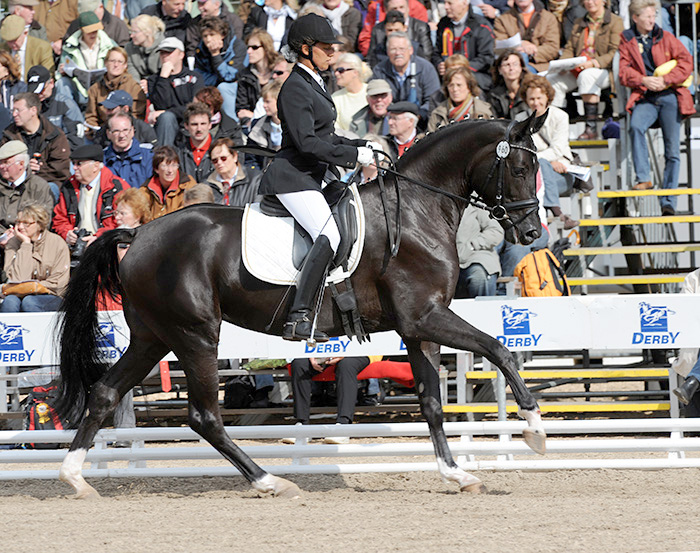
First of all we must achieve a correct, upright seat. When riding a horse our body falls into three main parts.
- The upper body from the top of the head to the waist,
- The seat is from the waist to the knee
- The lower leg from the knee down.
Of course we also have arms and hands. As in other sports and activities, the application of the core or abdominal muscles is vital to our success. This is where we must establish our centre of gravity and strength. Unfortunately, as human nature usually puts our posture in front of the vertical, our centre of gravity is habitually in the shoulder region, so we must adjust. When corrected on horseback and put into balance, instead of gripping, initially we should feel as though we’re falling off backwards. It is imperative to sit on the back of the seat bones, rounding the base of the spine and tilting the pelvis forward and up without slumping. The weight of our head should fall down the back of our body bringing our centre of gravity low to coincide with our core. We must always be careful that we do not lean or collapse either left or right of the horse’s spine and always travel with the movement. If we tip in front of the vertical in upright seat, we lose balance and grip with the thighs. This reduces the suppleness and makes it difficult to correctly half halt, so we resort to using the hands instead.
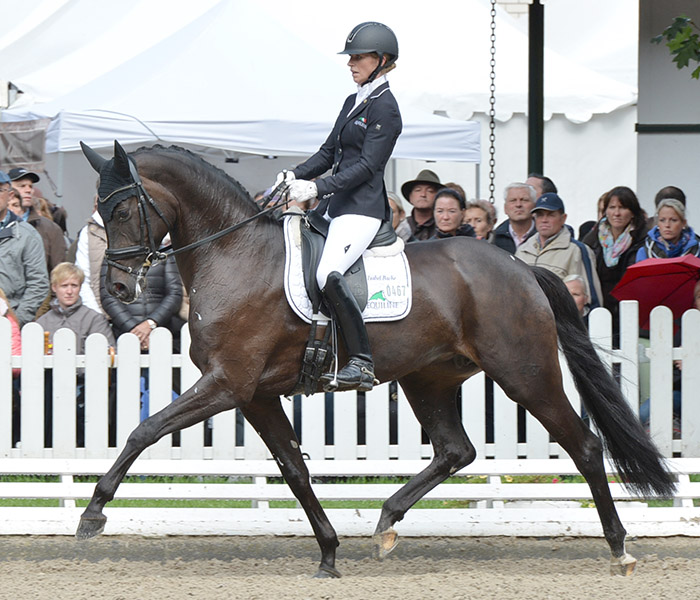
As the bit is the axis around which the ridden horse balances, hand actions are basically to receive, allow or block (elbows against flexible wrists). The main purpose of the hands is to connect the reins to the seat bones. Whether deliberate, or intentional, hands hooking, sponging, vibrating, let alone supporting the position of the rider, are backwards influences causing basically the inside hind leg to peg down short rather than reach under. The neck is shortened and the back loses its roundness and is either flattened or hollowed. When it is necessary to increase the contact, it should be by pushing from the back to the front, not by pulling back.
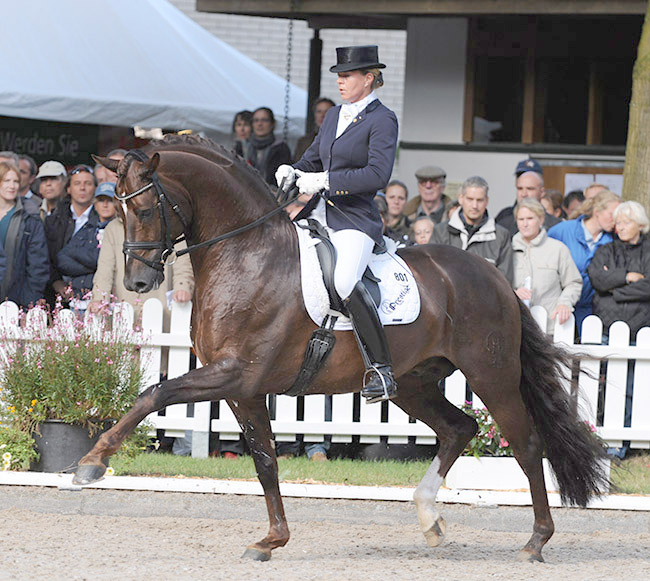
When we are in sync with the horse’s movement, in upright seat in walk, we should feel with our seat bones and a supple pelvis, the forward and back swinging in time with each front leg of the horse. In sitting trot, with a springing pelvis and supple thighs we should feel our seat bones springing forward and down and then back with each front leg. In canter, we again feel a forward and back swing but only once each stride not twice as in walk and trot. The forward swing of the seat bones up to the hand can become an application time for an influence (half halt) making the required contact. The backward swings are passive and are the lightening as we are not positively pressing up to the hand contact. However we must be careful that the contact is not dropped as a broken contact (loose, then contact again) repeated is very disturbing and uncomfortable for the horse.
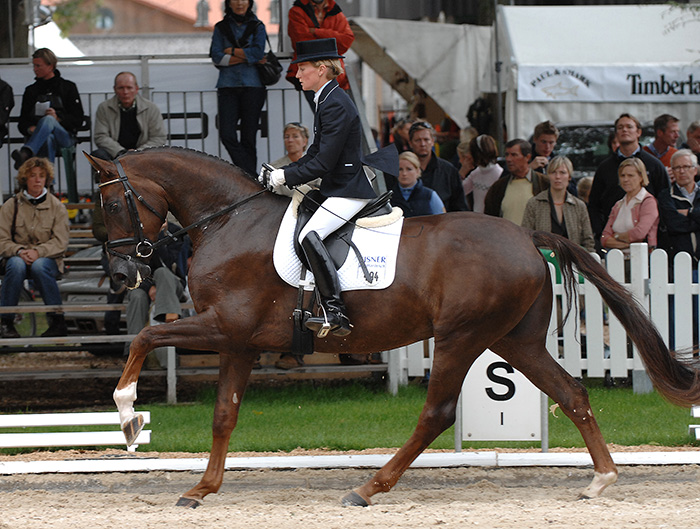
As we have to balance the horse to the outside leg and rein, we must push from the inside. In WALK, the sequence of footfalls is front, then opposite hind, front then opposite hind. So as only one half halt per stride is possible, by emphasising with our forward swing reinforced by our inside leg in time with the swing of the horse’s outside front leg, we will be influencing the horse’s inside hind leg to engage across; towards the outside as it swings forwards. At this time also the rib cage is swinging from the inside to the outside. In TROT, the inside hind leg leaves the ground at the same time as the outside fore. So again, as in walk, if we drive with our inside leg as we emphasise the forward swing of our seat bones (thrust) in time with the swing of the horse’s outside front leg, we are engaging the horse’s inside hind leg.
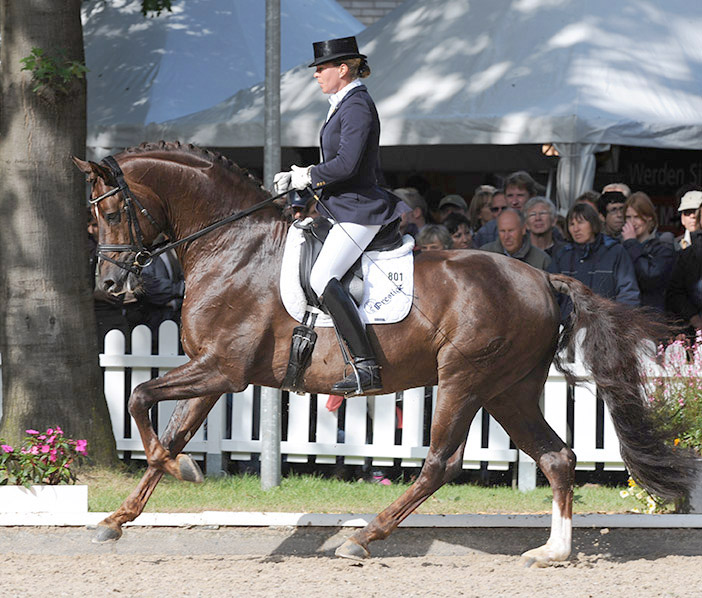
Similarly in CANTER, with the forward swing, the rider pushing with the inside leg engages the horse’s inside hind leg.
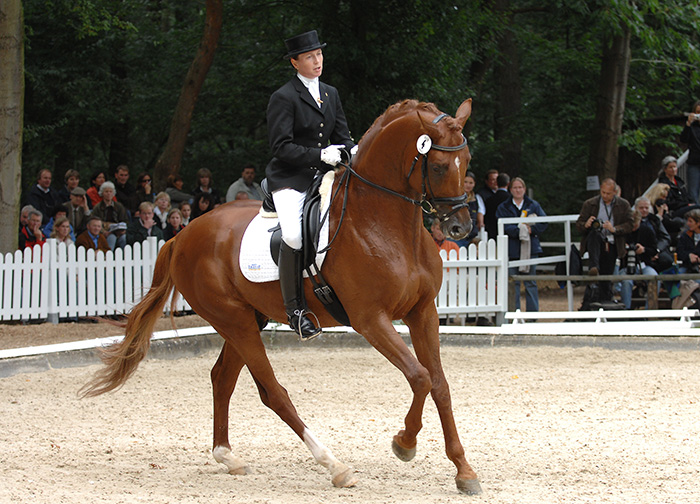
Always we must contain the pushing by having the outside leg firmly on, a little further back than the inside driving leg so the horse goes forward to the bit and does not fall or drift out sideways. How we swing, longer or shorter, always the precise rhythm of the gait gives the horse the space to lengthen or shorten the stride. The horse must always be in front of the leg, so he responds easily to the seat which may be emphasising or thrusting but never grinding – visibly moving more than the horse. The seat – up to hand – long or short, is as regular as a metronome.
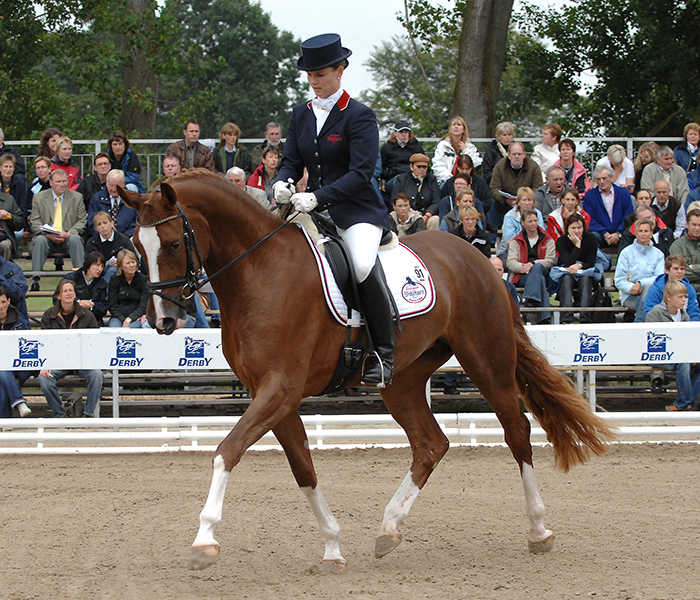
In RISING TROT used for young horses up, or warming up and cooling down. If you bump down on the saddle – transferring the weight from the stirrup to the seat of the saddle, it means you are not in balance and are left behind the movement. Poor Horse! You must lean forward until your shoulder is approximately vertically over the knee and your weight consistently through your knee onto the stirrup. Your body movement will then go forward and down through the knee end of your seat and back and a little up to just touch the seat of the saddle. Rising trot is actually one of the forward seats. As you come down with the correct diagonal (outside front) you can apply your inside lower leg to produce your application time of your half halt. As you lift back it is the lightening or passive time.
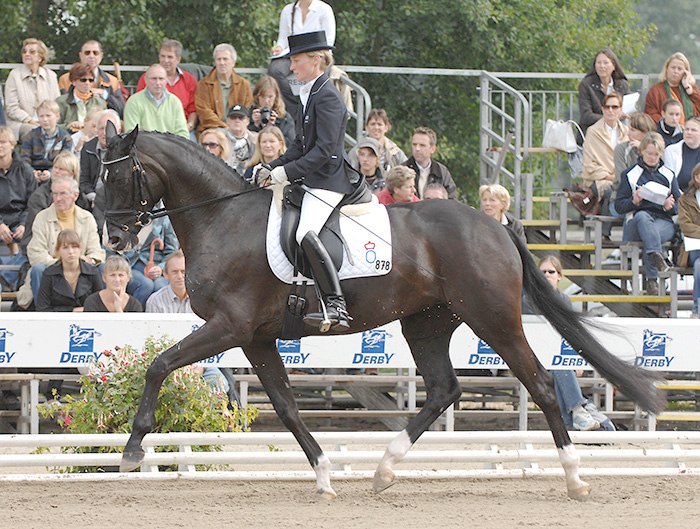
more follows
How we swing, longer or shorter against the hand, which may be containing less or more, depends on what we are trying to achieve.
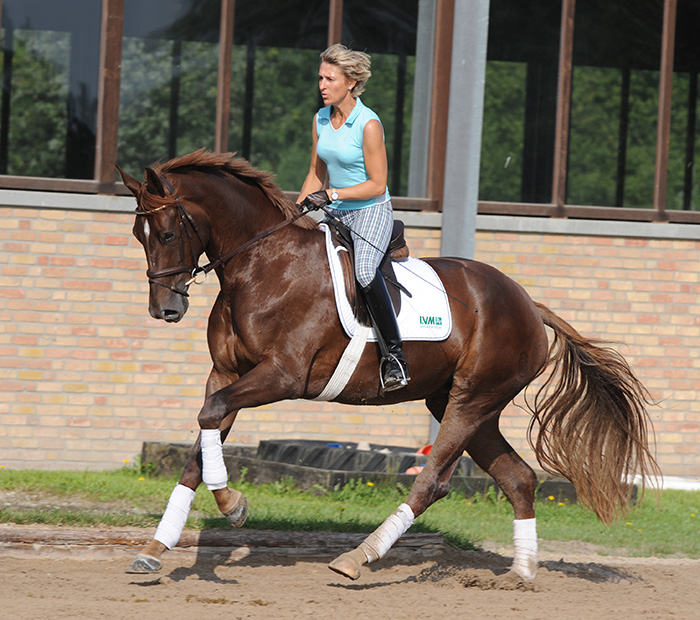
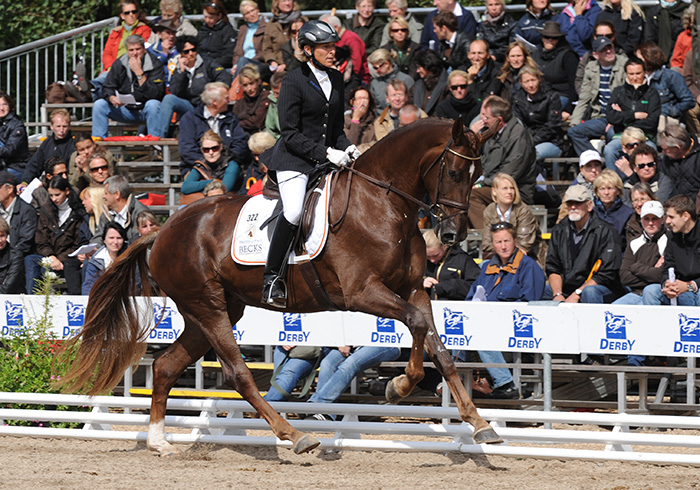
As we progress with our work and the horse understands our influences, we will develop more automatic reactions. Most of our problems in Australia, like all riders working without a trainer anywhere in the world, result from working so much in isolation – learning from trial and error. Most riders in Europe have the advantage of the visual with many role models and learn to ride with constant supervision and collaboration. Many do not analyse what they are doing or how they are doing it. Rather like playing a musical instrument by ear but not knowing which notes they’re using. They just do it.
We must never forget that the horse is a very tolerant, generous and forgiving creature, much more so than we human beings. By knowledge, patience, respect, understanding, repetition and reward he will become a very obliging partner for which we must be grateful.





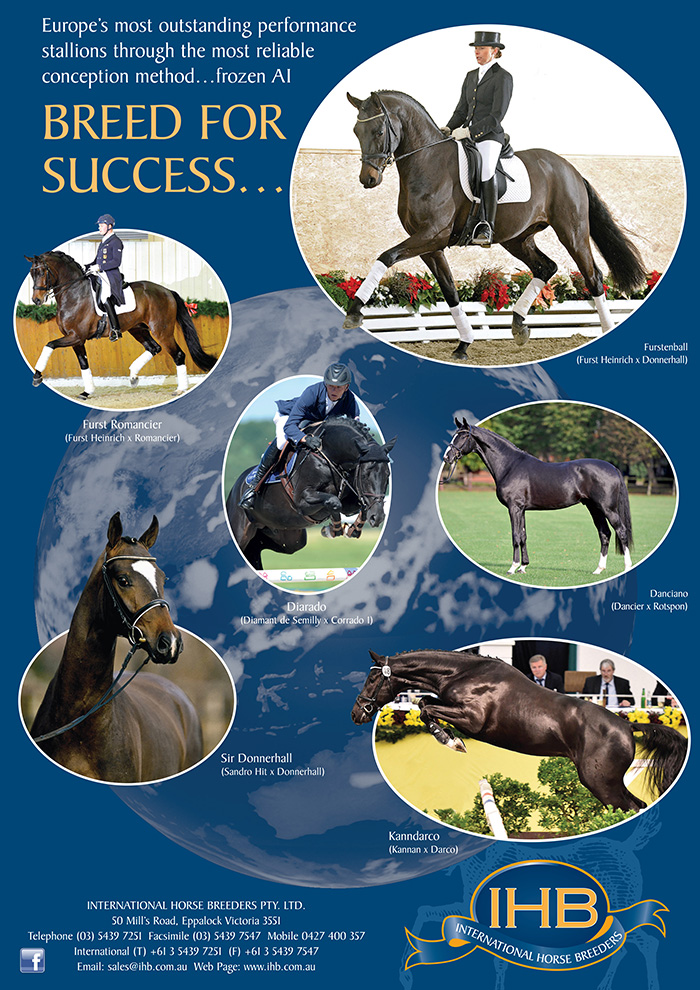
Your articles show inconsistencies in the use of the photos you include. Some of the horses look light and subtle , others are tense , the riders ( most) are looking down, Spurs in sides of horses, some of the riders look soft and invisible in their use of aids others look hard and “ noisey “ . Until sites like yours show consistent lightness, softness , and correct riding the sport of dressage will contuine to deteriorate.
Good article. Thank you!
One of the best articles I have read (studied) in 35 years. I do have another take on the sequence of footfalls in walk, but it became clear that #2 was the correct timing for application of half halt (as the hoof leaves the ground) for the correct effect. The principles and concepts are the biomechanics of riding for both horse and rider. Classical!